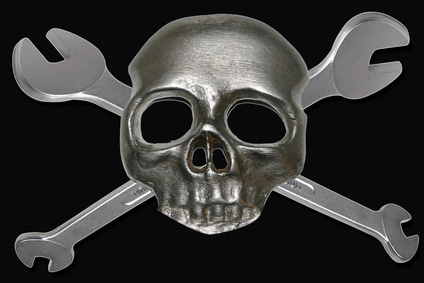
The Harley Davidson Sportster was originally introduced in 1952 and today remains one of the most sought after motorcycles in the history of the brand. According to Erik Hoopes, author of “The Model K Harley Davidson Motorcycle," the Sportster is a mixture of styles blended from a number of Harley’s widely sought after cruiser and performance bikes. Sometimes in a restoration project or in order to access the top of the motor, the tank of the Sportster will need removed. Removing the tank is not overly difficult and most home mechanics can do it.
Reach under the side of the tank and turn the gas petcock to the “Off” position to cut off any further gas flow to the engine. Use a pair of needle nose pliers to remove the small clamps holding the rubber hose ends onto the valves of the petcock, then slide the rubber hoses off of the petcock and allow the gas in the hoses to pour into a catch container for proper disposal. Use a small screwdriver to remove the bolts holding the headlight wiring to the inside of the tank.
The seat covers a portion of the rear of the tank and will need removed in order to take the tank off as well. Use a socket wrench to remove the bolts holding the seat on each side of the frame and slide the seat back and pull up on the rear portion. This should disengage the mounting tab on the front of the seat and allow you to remove it. Depending on the year of your Sportster, there may also be a wire connecting an air box intake grounding wire to your seat, which is easily removed with a Phillips head screwdriver.
Use a socket wrench to remove the mounting bolts holding the tank onto the frame. Locate the front bolt up dear the front middle portion of the tank and remove it first. The back portion of the tank should be the only thing left holding the tank in place. Have a friend hold the tank as you carefully unscrew the rear mounting bolt from the underside of the tank. Slide the tank back away from the handlebars slightly and then lift up. The tank could be quite heavy depending on how much fuel is left in it. Make sure to dump the gas out in a certified container before you begin working on the tank or bike.